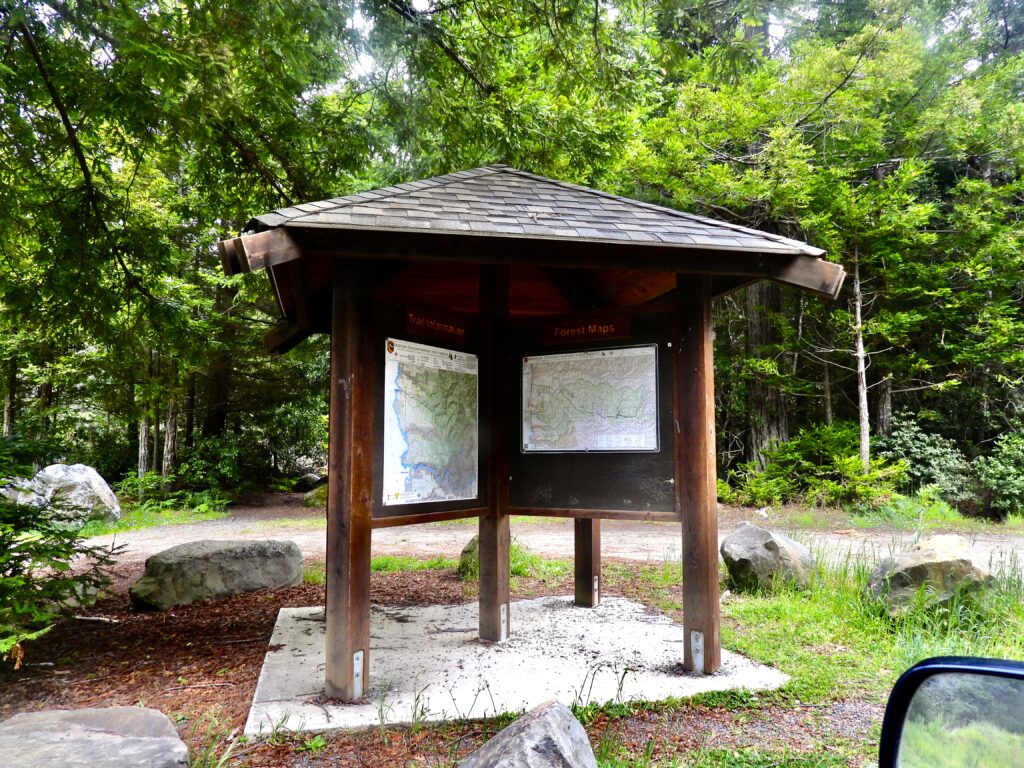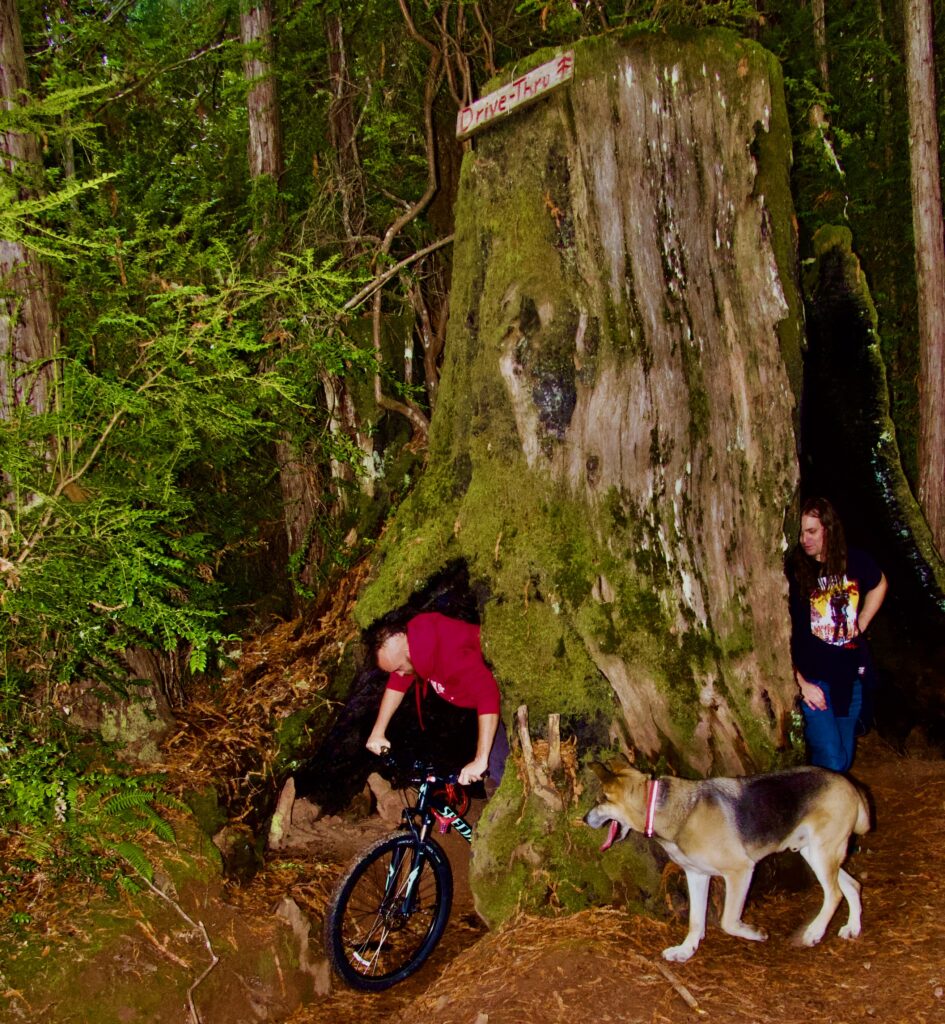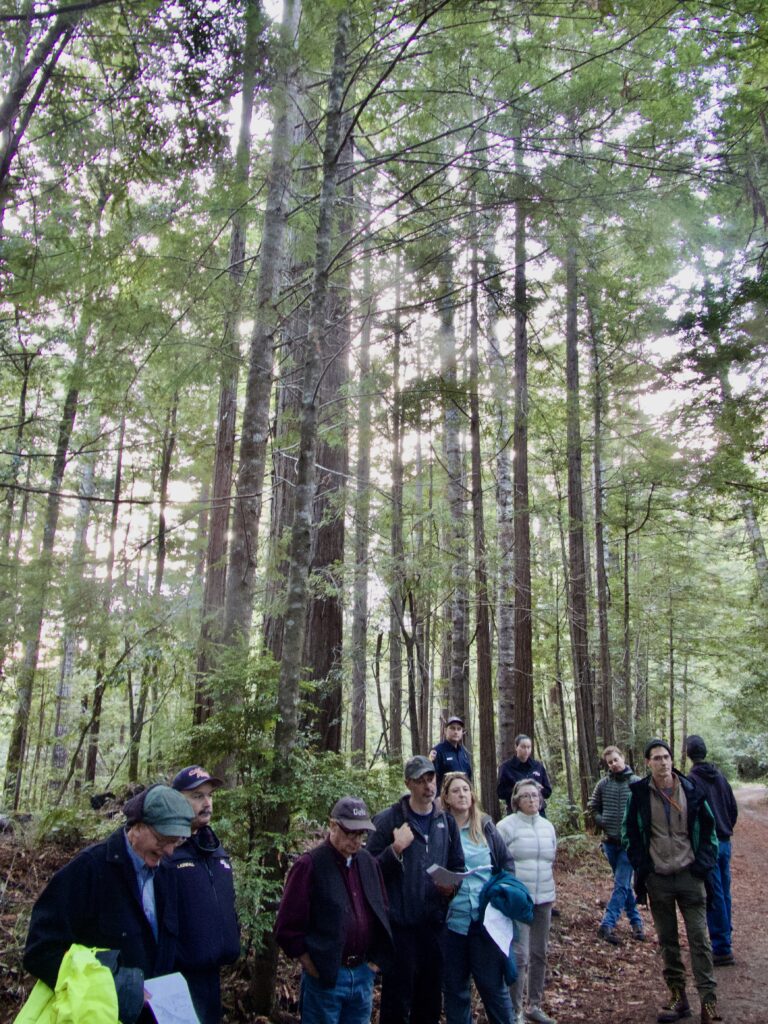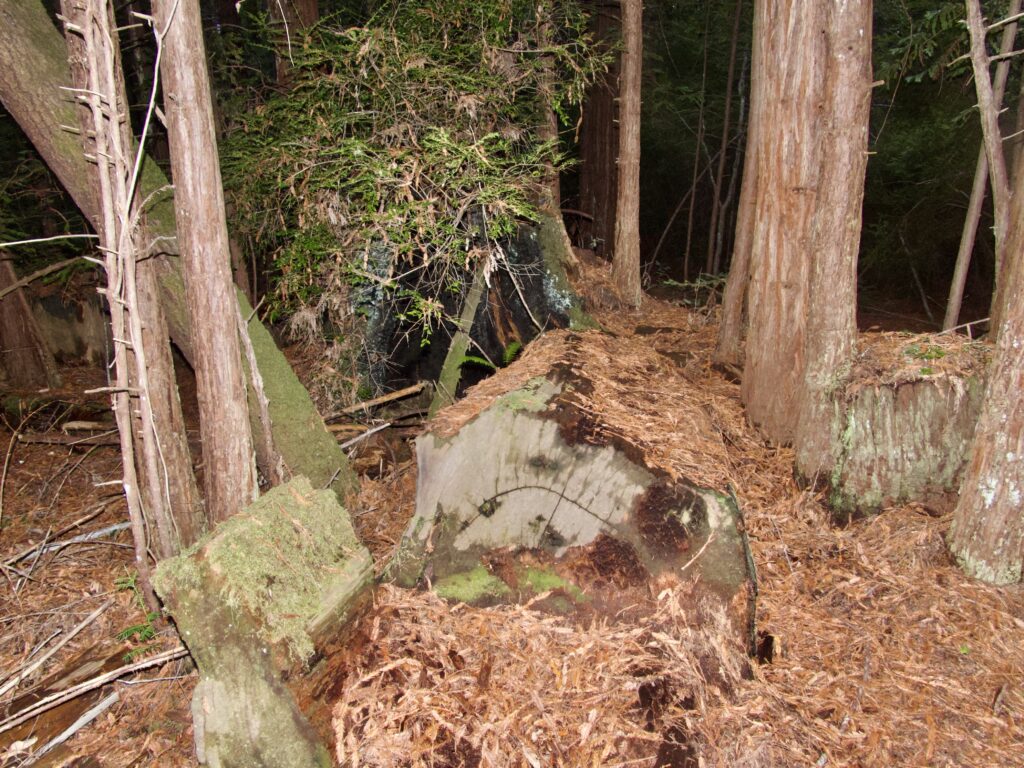Who has the rights to our local rivers and streams? CAL FIRE water rights bid canceled in the JDSF, other water sources being expanded

In another Mendocinocoast.news exclusive, we can report, the California State Water Board has canceled applications for water rights to CAL FIRE in Jackson Demonstration State Forest. Mendocinocoast.news found this news out a month ago in a filing that seemed quite dramatic, issued by the California State Water Board.
We have been trying to figure out what it means for several weeks. Was this denial fighting words between state agencies? Remember Mark Twain’s famous quote, “In California, whiskey is for drinking and water is for fighting over.”
No, but the story is still emerging and more interesting than just one water user. There is a shift by all water users away from historic stream use to other sources, such as hiring a water truck or using more wells. While water is water is water, it’s also true that the science shows removing water from streams has the worst environmental impact of any of the above. The biggest diverter of water on the Noyo River is the city of Fort Bragg which has innovated massively in recent years to get away from drawing down the Noyo. CAL FIRE says it has too done this. The tradition of pulling up a water truck to a river and sucking the water out is changing.
The history of the two Cal-Fire water rights up to cancellation
After no cutting in the CAL FIRE for almost the entire first decade of the 21st century, Cal Fire began doing timber harvests in the JDSF on a regular basis, with as many as 5 working in different stages at any one time. In 2013, , the state applied for the right to divert 5,480 gallons of water per day from Caspar Creek and its branches.
Water has always been a big part of logging operations. Local rivers and even tiny streams brought logs to the mill in the old days. Noyo Harbor and all the rivermouths were log jams at the mills.
Today, without water from somewhere being sprayed on roads, logging can’t happen. The dust during the Coast’s dry summers would literally create a whiteout for trucks. If the water truck is not available, logging stops. Since the days of the Caspar Lumber Company, the tradition has been to simply take the water from nearby rivers, sucking it through a hose dipped in the river. At one time, this was simply done without questions being asked. But over the last century and even more, water rights have evolved so that everybody who takes water has to utilize an orderly process. Those who had been doing it for generations were mostly given the right to continue doing so. So nothing much had changed by 2019. In 2019, Cal Fire greatly increased how much water they wanted and expanded the area all the important streams in the forest. CalFire applied to get 35,000 gallons of water per day from the Noyo River, Chamberlain Creek, James Creek and the north fork of Big River. The logging plans revved up The water application drew strong protest too, such as from the City of Fort Bragg, which relies on the Noyo River for drinking water.
At that time, CAL FIRE was commencing its biggest logging plans in decades, especially the Caspar 500 timber harvest plan. The Caspar 500 Harvest plan was passed just as the pandemic hit in 2020 and nobody really objected. But as soon as the trees were all marked and legal contracts were awarded, the Caspar 500 (and then every other logging plan in the JDSF) generated strong protests from environmentalists. The plan was big and it was right on the western edge of the forest, where many Caspar landowners and hikers and bikers would see big trees cut in the most accessible and visible areas of the JDSF.
The Caspar 500 harvest plan blew up in the face of CAL FIRE. The scale and proximity to homes in the Caspar 500 brought many new allies to the environmentalists who had been wrestling with CAL FIRE since the late 20th century over how logging was being done. The Coalition to Save Jackson Forest turned out tree sitters, people chaining themselves to gates and big crowds. The Caspar 500 was an overreach that ended up being the call of “timber” for all the other timber harvest plans too. All logging got shut down in 2020 and 2021, so those big water diversions were not needed for logging that never happened. And the latest drought ended. CAL FIRE, seeing the protests from the city and fights over river water with the city and others water users, got to work finding other water sources for the time when logging might return..
There is another quote about water, almost as famous, “water is a dry subject.”
At first, the whole issue did seem drier after an explanation provided to Mendocinocoast.news by CAL FIRE’s head of the demonstration forest program, Kevin Conway.
“The water rights application was started in 2013 and the Water Board proposed action in 2023. During this time, we re-evaluated our need and developed other solutions to provide water for our dust abatement activities to protect the road surface, air quality, and water quality so we did not follow through on the application,” Conway told Mendocinocoast.news.
The water board’s cancellation of CAL FIRE’s water rights applications in Jackson opened up a mountain of new questions. What is water being used for and by whom now? What are the impacts of digging new wells or using more and more groundwater, by all the users?

Mendocinocoast.news filed a California Public Records Act request with the Water Board so we could give readers a bigger picture of where precious water is being diverted and to whom. Mendocinocoast.news got a quick reply from Kenneth Petruzzelli, attorney IV, from the State Water Resources Control Board Office of Enforcement. Petruzzelli told us it would take at least 30 days to respond to our requestPetruzzelli said we might have to come to Sacramento to look through hard copy files. It might be worth the trip. The drought could resume at any time California history tells us that. What is happening with our riparian, ancient and groundwater rights here on the Mendocino Coast? This investigation will be on the riparian allocations and after that on how our groundwater levels and wells are doing. We will not delve into other types of water rights, such as pre-1914 water rights at this point. I’m leaving the Potter Valley Project to the ubiquitous press release-only news media. We will look at water rights on the Coast only.
In the Jackson Demonstration State Forest, much of the future of forestry is happening. The public has been on tours where new ways of using fire and new ways of incorporating indigenous input has been “demonstrated.”

I hope this investigation and stories that come out about this topic over the next years can inform the Indigenous, recreational, environmental and logging communities. Or said another way, this subject is important to everyone who drinks and uses water on the Coast and doubly so for those who use the forest.
We perused water board files and found them fascinating but have been having a lot of trouble figuring it all out so we are hoping to come up with better questions for Petruzzelli. Please help us get these answers?. What is the process of water rights allocations from riparian (stream and river) sources? Is there a certain amount that can be taken out by all users and what are the criteria for these refusals? Who has them on the Noyo and the other coast river and streams between the Navarro River and Hollow Tree Creek? (Our coverage area roughly) This should be doable. The Water Board makes files accessible to the public online but some information requires more research.
CAL FIRE and others with water rights on local rivers and streams don’t lose any water rights when an application like this is canceled. They could go back and apply to use their water rights in the future. The follow up story by mendocinocoast.news will explain total water rights available on each local river and which are being used by all users, starting with the Noyo River. This will be published after a trip to Sacramento to review State Water Board files..
In Jackson Forest, all commercial logging was shut down after protests in 2020 and 2021. There are now timber harvest plans in the works that are much richer with scientific study than what went on in the forest in the years leading up to the protests, or at least more information about the science work is coming out now. CAL FIRE has offered regular public tours that showed how the science works. They hope to convince enough of the opponents of logging that this kind of science actually greatly improves logging, fire protection and the environment over what was being done in the past. CAL FIRE insists logging must continue in an age where we all still live in wooden houses. Many protesters draw the line hard and insist all logging must stop. This script is still unfolding, but in the meantime, Mendocinocoast.news will dive into the water use issue. CAL FIRE will likely try for more water later, in conjunction with timber harvest plans that show the need.
“Our annual reporting to the waterboard includes 18 potential water drafting sites, most of which have been inactive in recent years. These would be used for specific Timber Harvest Plans (THPs) and under a permit issued by the California Department of Fish and Wildlife (Fish and Game Code 1600) which takes into consideration flows to protect fish and aquatic life. The Regional Water Boards also participate in the environmental review of THPs. Many of the streams on Jackson have low flows in the summer months (after about July) so we have transitioned to using wells, which are more reliable throughout the summer and lessen our potential to impact aquatic environments,” Conway said.
Conway also told Mendocinocoast.news about an interesting effort underway in Hare Creek. We plan to get details on this.
“Our sustainable forestry, protection of watercourse buffers, and upgrading of roads and stream crossings provide high-quality water and regulated flows to downstream communities while also protecting aquatic habitats and providing recreation opportunities,” Conway told Mendocinocoast.news.
“ We also have a project underway with the City of Fort Bragg to upgrade their water system for reliability against earthquakes and other natural disasters in the Hare Creek area of JDSF. We take pride in stewarding the headwaters of so many coastal communities.”


Here is the order from the State Water Resources Control Board that we started this story with when it was issued earlier this month:
1. On June 13, 2013, water right application A032122 was filed with the State Water Resources Control Board (State Water Board), Division of Water Rights.. The application requests the right to divert up to 5,480 gallons per day by direct diversion, with an annual limit of 1.987 acre-feet per year, from the North Fork Caspar Creek, the South Fork Caspar Creek, and the Caspar Creek stream systems.
2. On August 12, 2019, water right application A033066 was filed with the Division.
This second application requests the right to divert up to 35,000 gallons per day by direct diversion, with an annual limit of 21.48 acre-feet per year, from the following sources: (1) the Chamberlain Creek, James Creek, and North Fork Big Riverstream systems; (2) the North Fork Noyo River and the South Fork Noyo River stream systems; and (3) the Hare Creek stream system.
3. The California Department of Forestry and Fire Protection, Jackson
Demonstration State Forest (applicant) is the current owner of both applications.
4. By letters dated May 11, 2023, February 19, 2025, April 7, 2025, and May 30, 2025, Division staff contacted the applicant to request an answer to each of the protests filed against the applications. The applicant did not provide the required answers.
5. The applicant, after due notice, has failed to provide an answer to each of the protests pursuant to section 1334 of the Water Code or to show good cause why additional time should be allowed. (Wat. Code, § 1335.)
6. Pursuant to Resolution No. 2012-0029, the State Water Board has delegated authority to the Deputy Director for Water Rights (Deputy Director) to cancel applications. (Resolution No. 2012-0029, section 4.5.2.) Resolution No. 2012-0029 authorizes the Deputy Director to redelegate this authority, and this authority has been so redelegated by memorandum dated April 20, 2023.
THEREFORE, IT IS ORDERED THAT APPLICATIONS A032122 AND A033066 ARE HEREBY CANCELED.
Applicant shall document any diversions made under claim of right independent of a permit, license, registration or certification issued by the State Water Board, such as diversions under riparian or pre-1914 rights…

Here is the letter I got back from the State Water Resources Control Board:
August 7, 2025
VIA ELECTRONIC MAIL
Frank Hartzell
frankhartzell@gmail.com
RESPONSE TO July 30, 2025, PUBLIC RECORDS ACT REQUEST
Dear Frank Hartzell,
On July 30, 2025, the State Water Resources Control Board (State Water Board), received an emailed request….After an initial review, we have determined that the State Water Board has records responsive to your request. We intend to produce records responsive to your request that are not exempt or
prohibited from disclosure. If we determine that any responsive records are exempt from disclosure, you will be notified in writing of that determination and of the type of
exemption(s) under which the records are being withheld. Please be advised that the Board is not waiving any applicable privileges and is not required to assert a written exemption unless and until records are withheld. We estimate 30 days will be required to complete your request. Once records are available for disclosure, you may arrange with staff to review physical record in person, at the State Water Board headquarters at 1001 I Street, Sacramento, CA 95814, before
requesting scanned or duplicated records. Scanning or duplication requests exceeding fifty pages will be referred to a bonded copy service, who will estimate the cost of scanning or reproduction. Payment will be required before disclosure. Records that already exist in electronic form will be made available through an ftp link we will provide. Please contact me with any other questions regarding this CPRA request.
So stay tuned. And if anyone wishes to volunteer to help us figure this all out, our site is not yet monetized, so there is no pay but this stuff is fascinating. All we ask is to promise not be a partisan on the issues, just help us outsmart the Devil and get to the bottom of the Deep Blue Sea!

